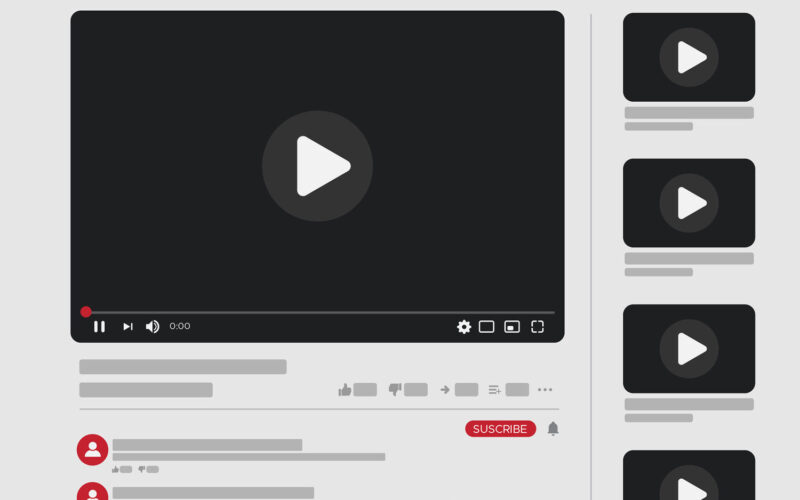How does the YouTube Algorithm works?
YouTube has grown to be the most influential platform since it was first created in 2005. Many people spend their time uploading videos to YouTube and watching shared videos. They also search for the information they want on YouTube. YouTube is taking a marketing strategy called YouTube algorithm to keep countless users on the platform for a long time and grow the brand.
What is the YouTube Algorithm?
YouTube algorithms are helping to increase advertising revenue and brand growth by encouraging people to watch videos on YouTube for a long time. It analyzes the data of tens of billions of users and recommends the most likely video to be viewed by the user. YouTube uses this marketing strategy to maximize user satisfaction, making them revisit the platform (Chen, 2022).
Factors affecting the YouTube Algorithm
The YouTube algorithm recommends videos to users by reflecting various factors (Keenan, 2022).
- The content that the viewer is watching
- The content that the viewer doesn’t watch
- Time for the viewer to watch the content
- History searched by the viewers
- The content previously viewed by the viewer
- Age and location of the viewers
- The content that the viewer press the like button and the content that the viewer press the hate button
The principle of the recommendation system
A recommendation system is a kind of data filtering system that recommends content to the most relevant to the target user. The recommendation engine works as follows:
The first is to collect data from a target. Data that the system needs to collect include implicit data and explicit data. Implicit data includes information such as web search history, shopping cart lists, and order history. Explicit data includes information such as reviews, evaluations, and comments.
After collecting the data, the data should be stored. The amount of data collected over time will become enormous. Therefore, it is necessary to have sufficiently scalable storage. To use the data, the data must be analyzed. The data may be processed immediately after collection or may be processed periodically. The analyzed data is classified as suitable for collaborative filtering, content-based, or hybrid model systems. Various rules and formulas are then applied to the data and used according to the types (Meserole, 2022).
The types of recommendation systems
Collaborative filtering system
This system collects data on user behavior, tastes, and preferences. Then it analyzes and classifies what is similar to other users. Based on this data, the engine predicts what the user will like. This system simply recommends content using information that analyzes the target (Rocca, 2019).
Contents-based filtering system
The system works according to the formula that if the user prefers the particular item, the user also likes the other items involved. The engine calculates similarities by analyzing user tastes and content. The limitation of this system is that it recommends content that users already know or are similar to (Rocca, 2019).
A hybrid model filtering system
The hybrid system has features of both the collaborative filtering system and the contents-based filtering system. The system can calculate similarity by generating tags for each product or content. Then, the engine recommends content according to the user’s activities and tastes (Rocca, 2019).
Conclusion
With services such as YouTube, Netflix, and Amazon, many people are already experiencing recommendation systems. The engine can efficiently generate sales and maintain customers by providing customized services. In fact, due to the YouTube algorithm, it is hard for many YouTube users to shut down the service by watching only one video. Recommendation systems such as YouTube algorithms provide customized content to users to increase satisfaction. However, this engine recommends content limited to the interest of the target. For this reason, users are provided with only information related to their interests. It can result in narrowing their views (Lomas, 2021).
References
Chen, J. (2022). How the YouTube algorithm works in 2022. [online] Sprout Social. Available at: https://sproutsocial.com/insights/youtube-algorithm/ [Accessed 14 October 2022].
Keenan, M. (2022). How the YouTube Algorithm Works (Or Why Your Videos Aren’t Getting Views). [online] Shopify. Available at: https://www.shopify.com/blog/youtube-algorithm [Accessed 14 October 2022].
Lomas, N. (2021). YouTube’s recommender AI still a horror show, finds major crowdsourced study. [online] TechCrunch. Available at: https://techcrunch.com/2021/07/07/youtubes-recommender-ai-still-a-horrorshow-finds-major-crowdsourced-study/ [Accessed 14 October 2022].
Meserole, C. (2022). How do recommender systems work on digital platforms? [online] Brookings. Available at: https://www.brookings.edu/techstream/how-do-recommender-systems-work-on-digital-platforms-social-media-recommendation-algorithms/ [Accessed 14 October 2022].
Rocca, B. (2019). Introduction to recommender systems. [online] Medium. Available at: https://towardsdatascience.com/introduction-to-recommender-systems-6c66cf15ada [Accessed 14 October 2022].
